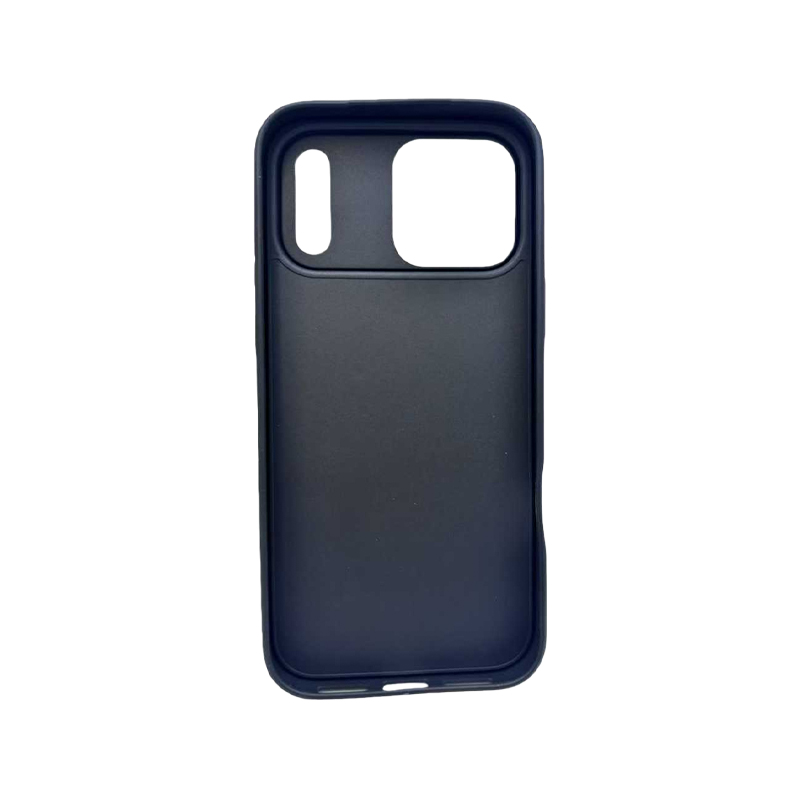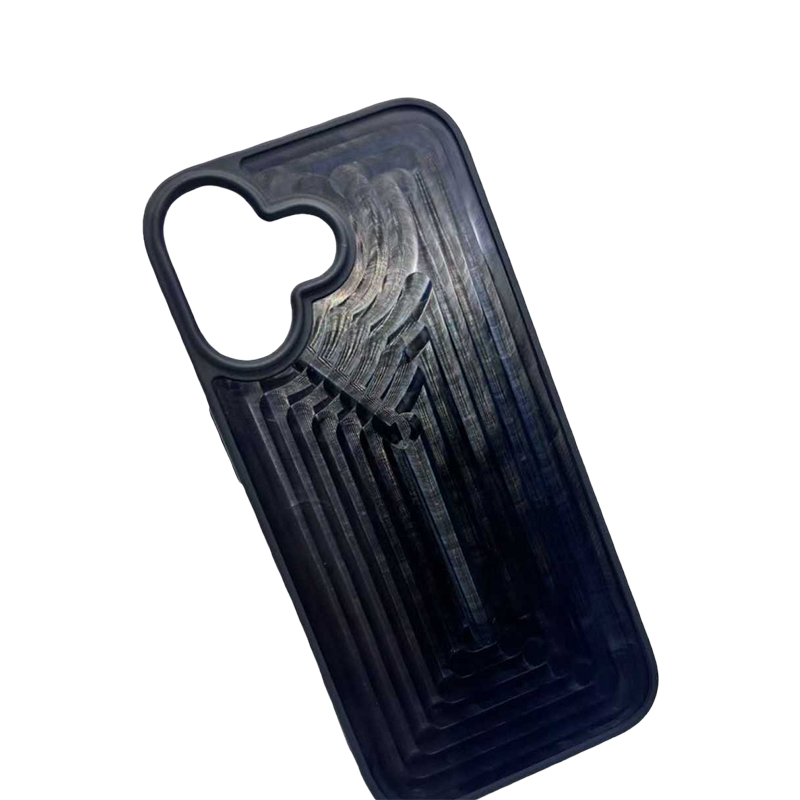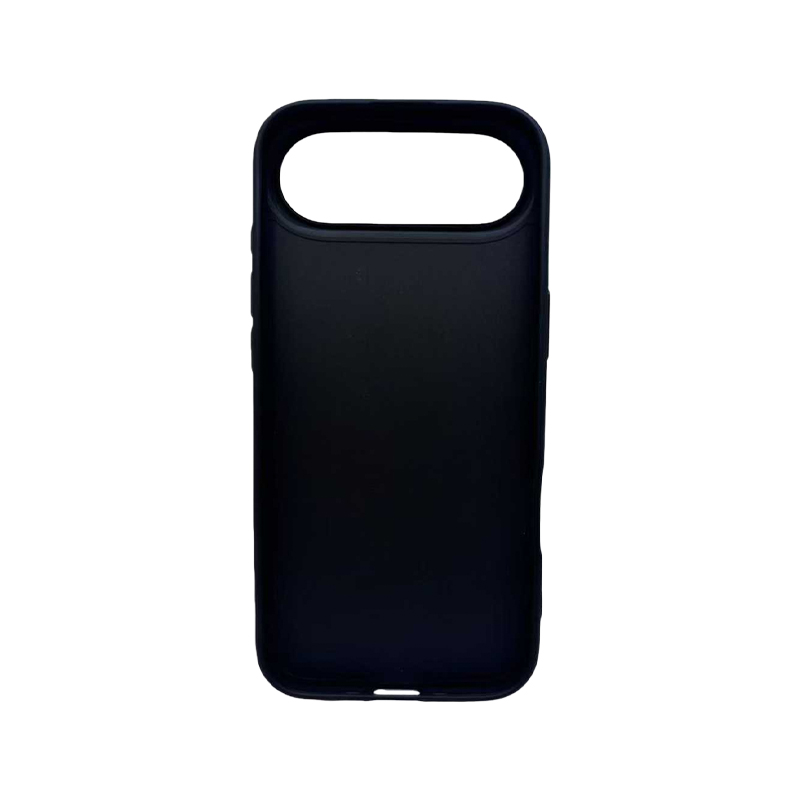How can phone cases provide effective drop protection while achieving an ultra-thin profile?
Release Time : 2025-11-04
With smartphones becoming increasingly thinner and lighter, and screen ratios constantly rising, users face a dilemma regarding phone cases: they want them to be extremely thin and light, preserving the original feel and aesthetics of the device, while also providing reliable protection in the event of accidental drops. Surprisingly, modern high-end phone cases have successfully found a balance between "thinness" and "strength" through triple innovation in materials science, structural engineering, and precision manufacturing.
1. High-polymer composite materials: Light as a feather, tough as silk
Traditional silicone or hard plastic cases often rely on increased thickness to absorb impact, while modern ultra-thin cases use high-performance engineering materials, such as an upgraded version of TPU—high-resilience, impact-resistant TPU—or multi-layered structures combined with PC. These materials possess a "soft and hard combination" characteristic: the outer PC layer provides rigid support, resisting scratches and deformation; the inner high-elasticity TPU acts like a "miniature airbag," rapidly deforming upon impact to absorb and disperse impact energy. More advanced products incorporate nanoscale cushioning particles or micro-honeycomb structures, forming countless energy dissipation units at the microscopic level, enabling a 1mm thick shell to achieve the energy absorption efficiency of a traditional 3mm shell.
2. Bionic Structural Design: Overcoming Strength with Ingenuity
Inspired by nature, engineers have incorporated bionic structures such as honeycomb, arches, and corrugations into ultra-thin shell designs. For example, thickened micro-dome or embedded cushioning pads are used at the four corners of the phone—the areas most vulnerable to impact during drops; tiny "shock-absorbing ribs" or "cantilever beams" are designed on the inner side of the frame, which can generate elastic deformation under pressure, delaying the transmission of impact to the body. This strategy of "local reinforcement and overall thinness" concentrates protection in key areas rather than uniformly piling up materials, saving space and improving efficiency. Some brands even simulate hundreds of drop scenarios through finite element analysis to precisely optimize the thickness and shape of each structure.
3. Micro-convex Edge Design: Protecting the Most Vulnerable Screen
Although ultra-thin shells are thin, they generally adopt a design with a micro-convex edge of 0.2–0.3mm around the screen. When the phone falls face-down, this tiny bump ensures the screen doesn't directly contact the ground, preventing shattering. Simultaneously, the camera area also features an equal or higher bump to prevent lens scratches. This "millimeter-level" detail is a key element in the comprehensive protection achieved by the ultra-thin case, neither interfering with screen protectors or touchscreen functionality, yet playing a crucial role in critical moments.
4. Precision Manufacturing Guarantee: Thin Yet Strong
Ultra-thin doesn't equate to fragile; behind it lies a rigorous manufacturing process. High-quality ultra-thin cases are made using unibody injection molding, avoiding stress concentration caused by seams; the surface undergoes an anti-yellowing coating and anti-fingerprint treatment, maintaining a transparent or matte texture even after long-term use; the edges are CNC-machined to ensure a seamless fit with the phone, without looseness or rattling. Some high-end products have also passed MIL-STD-810H military-grade drop protection certification, performing excellently in multi-angle drop tests from heights of 1.2 meters and even 1.8 meters, proving that "thin" and "strong" are not contradictory.
5. User Experience: Returning to the Essence of the Phone
Ultimately, the value of ultra-thin drop-proof cases lies not only in technology but also in the user experience. They add almost no bulk to the phone, preserving the original grip; they don't obstruct the speaker, charging port, or wireless charging coil; and transparent models showcase the phone's true form. Users don't need to compromise between the risks of an unprotected phone and bulky protection, truly achieving "wearing it like nothing, fearless of drops."
The breakthrough in phone cases is the result of the synergistic evolution of materials, structure, and manufacturing processes. It replaces excessive material usage with science and bulkiness with intelligence, constructing an invisible protective shield within a small space. For users who pursue the ultimate experience without sacrificing safety, a high-quality ultra-thin drop-proof phone case is a daily testament to the perfect fusion of technology and lifestyle aesthetics—light as the wind, protective as a mountain.
1. High-polymer composite materials: Light as a feather, tough as silk
Traditional silicone or hard plastic cases often rely on increased thickness to absorb impact, while modern ultra-thin cases use high-performance engineering materials, such as an upgraded version of TPU—high-resilience, impact-resistant TPU—or multi-layered structures combined with PC. These materials possess a "soft and hard combination" characteristic: the outer PC layer provides rigid support, resisting scratches and deformation; the inner high-elasticity TPU acts like a "miniature airbag," rapidly deforming upon impact to absorb and disperse impact energy. More advanced products incorporate nanoscale cushioning particles or micro-honeycomb structures, forming countless energy dissipation units at the microscopic level, enabling a 1mm thick shell to achieve the energy absorption efficiency of a traditional 3mm shell.
2. Bionic Structural Design: Overcoming Strength with Ingenuity
Inspired by nature, engineers have incorporated bionic structures such as honeycomb, arches, and corrugations into ultra-thin shell designs. For example, thickened micro-dome or embedded cushioning pads are used at the four corners of the phone—the areas most vulnerable to impact during drops; tiny "shock-absorbing ribs" or "cantilever beams" are designed on the inner side of the frame, which can generate elastic deformation under pressure, delaying the transmission of impact to the body. This strategy of "local reinforcement and overall thinness" concentrates protection in key areas rather than uniformly piling up materials, saving space and improving efficiency. Some brands even simulate hundreds of drop scenarios through finite element analysis to precisely optimize the thickness and shape of each structure.
3. Micro-convex Edge Design: Protecting the Most Vulnerable Screen
Although ultra-thin shells are thin, they generally adopt a design with a micro-convex edge of 0.2–0.3mm around the screen. When the phone falls face-down, this tiny bump ensures the screen doesn't directly contact the ground, preventing shattering. Simultaneously, the camera area also features an equal or higher bump to prevent lens scratches. This "millimeter-level" detail is a key element in the comprehensive protection achieved by the ultra-thin case, neither interfering with screen protectors or touchscreen functionality, yet playing a crucial role in critical moments.
4. Precision Manufacturing Guarantee: Thin Yet Strong
Ultra-thin doesn't equate to fragile; behind it lies a rigorous manufacturing process. High-quality ultra-thin cases are made using unibody injection molding, avoiding stress concentration caused by seams; the surface undergoes an anti-yellowing coating and anti-fingerprint treatment, maintaining a transparent or matte texture even after long-term use; the edges are CNC-machined to ensure a seamless fit with the phone, without looseness or rattling. Some high-end products have also passed MIL-STD-810H military-grade drop protection certification, performing excellently in multi-angle drop tests from heights of 1.2 meters and even 1.8 meters, proving that "thin" and "strong" are not contradictory.
5. User Experience: Returning to the Essence of the Phone
Ultimately, the value of ultra-thin drop-proof cases lies not only in technology but also in the user experience. They add almost no bulk to the phone, preserving the original grip; they don't obstruct the speaker, charging port, or wireless charging coil; and transparent models showcase the phone's true form. Users don't need to compromise between the risks of an unprotected phone and bulky protection, truly achieving "wearing it like nothing, fearless of drops."
The breakthrough in phone cases is the result of the synergistic evolution of materials, structure, and manufacturing processes. It replaces excessive material usage with science and bulkiness with intelligence, constructing an invisible protective shield within a small space. For users who pursue the ultimate experience without sacrificing safety, a high-quality ultra-thin drop-proof phone case is a daily testament to the perfect fusion of technology and lifestyle aesthetics—light as the wind, protective as a mountain.







